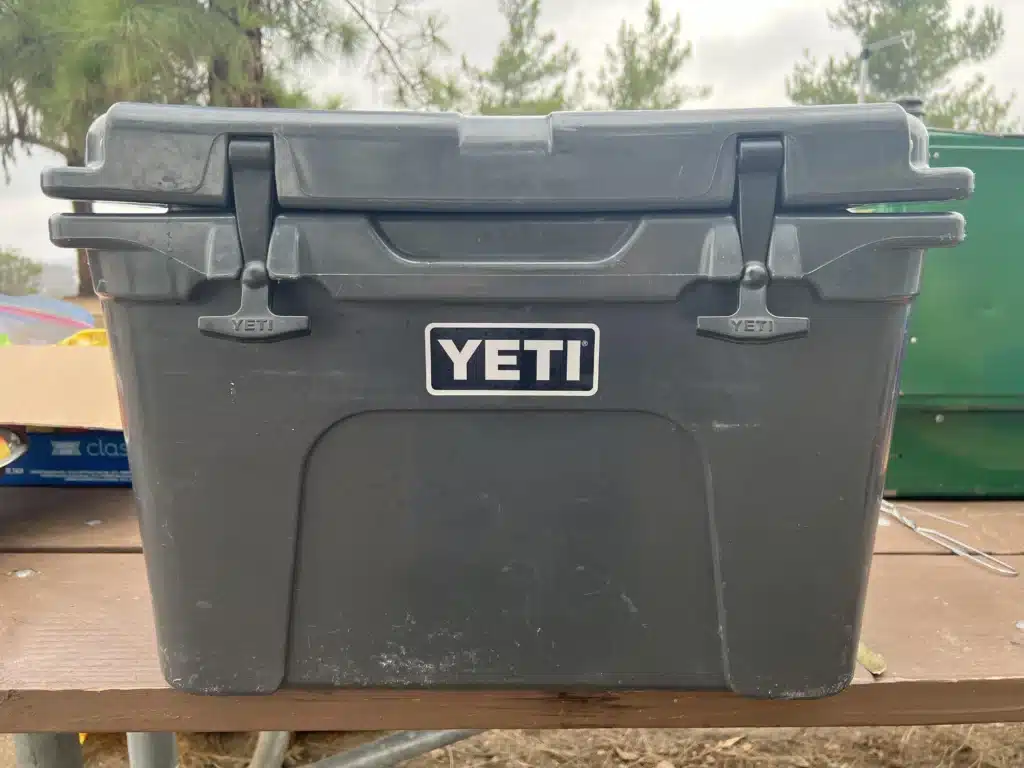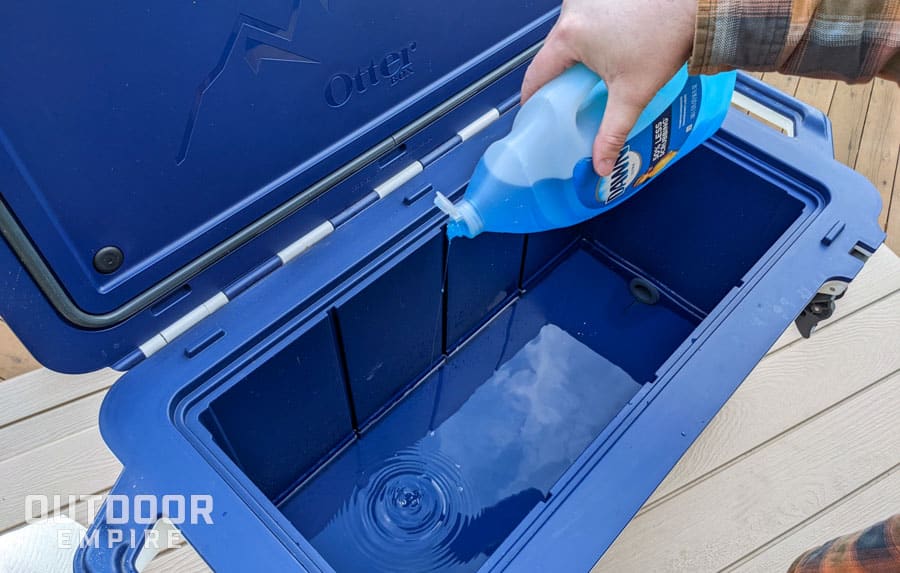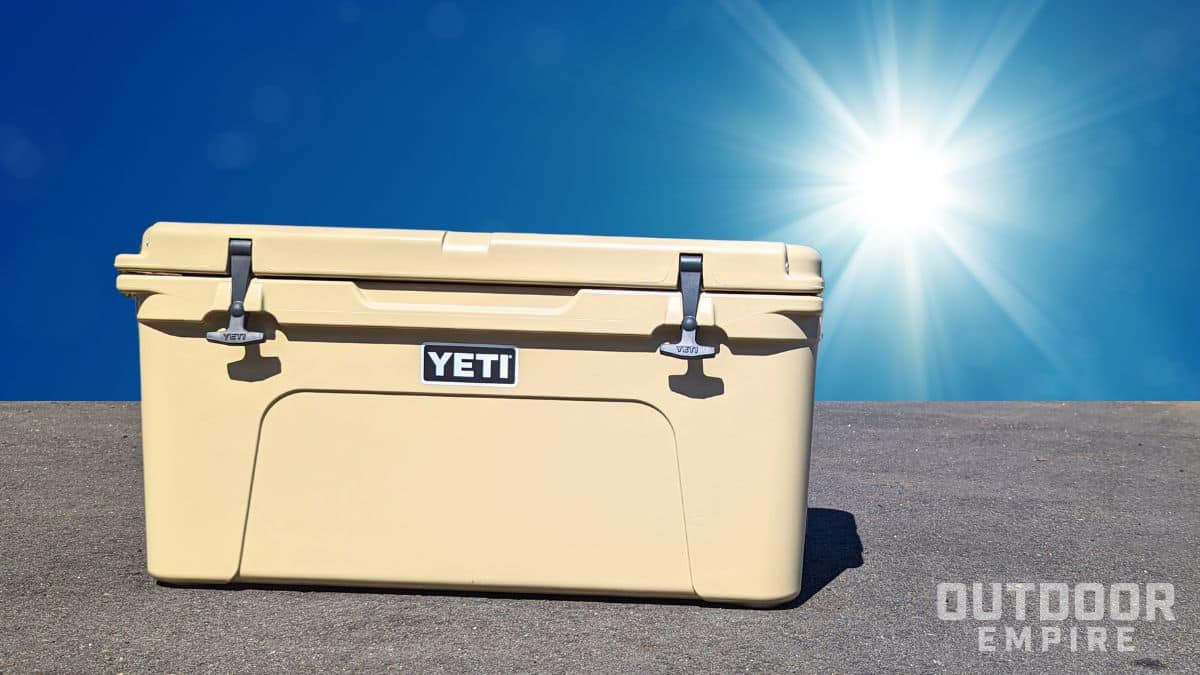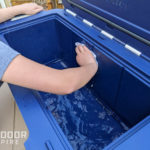In the world of outdoor adventures, a quality cooler is your trusty sidekick, keeping your beverages chilled and your catch fresh. But too often, these reliable companions meet untimely ends due to common, yet avoidable, mistakes.
Whether you are a proud owner of a high-end YETI or a budget cooler from Walmart, the following guidelines will ensure that your cooler enjoys a long, functional life. Let’s delve deep into the common cooler mistakes people commit and how to steer clear of them.
Mistake 1: Allowing Your Cooler to Sunbathe
We often overlook the simple fact that coolers are primarily made of plastic—a material that morphs under high heat. Exposing your cooler to the blazing sun for extended periods can lead to a distorted shape, especially affecting the lid, the guardian of the cooler’s internal temperature.
Warped lids break the air seal, allowing the cold air to escape and warm air to enter, massively reducing the cooler’s efficiency.
This problem is particularly rampant among high-end rotomolded coolers from reputable brands like YETI, Cabela’s, RTIC, and more. This is, in part, because the polyethylene plastic used to make these coolers has a lower melting temperature than the plastic used in blow-molded or injection-molded coolers.
To avoid this, position your cooler in a shaded spot, sheltered from direct sunlight. This small act of caution not only preserves the cooler’s shape but also enhances its cooling performance.

Mistake 2: Incorrect Storage Practices
Coolers are prone to damage when exposed to extreme temperatures for extended periods. The heat can make the plastic soft and malleable, while excessive cold can render it brittle. Moreover, if stored in a place with temperature fluctuations, the material deteriorates even faster. Even before your cooler reaches you, it might have endured damage from being stored in overheated warehouses.
The antidote to this is simple: store your cooler in a temperature-stable, insulated space, far from harmful chemicals that might be lurking in your garage. Elevate it on a shelf, safe from direct sunlight, and it will serve you well for years to come.
Mistake 3: Neglecting Leftovers
After a long day of adventures, the last thing you want to do is clean your cooler. However, leaving it unattended can transform it into a bacterial breeding ground, emanating a foul stench that is hard to eliminate. Raw fish from a fishing trip or wild game meat from a hunting expedition can particularly exacerbate this issue.
To prevent this, make a habit of cleaning your cooler immediately after use. If cleaning immediately is not feasible, ensure to replenish the ice to keep the contents cold until you can attend to it.
Mistake 4: Harsh Cleaning Regimens
While cleanliness is vital, adopting aggressive cleaning methods can be counterproductive. Avoid using boiling water or abrasive scrubbers, which can damage the plastic and leave your cooler worse for wear.
Instead, opt for gentle cleaning agents and tools, such as a sponge coupled with water and dish soap. For stubborn stains, a mix of baking soda or a dab of rubbing alcohol works wonders, restoring your cooler to its pristine state without compromising its structure.

Mistake 5: Storing When Wet
Putting away a wet cooler is a recipe for mold and nasty odors. To keep your cooler fresh and ready for its next outing, allow it to dry completely in a well-ventilated area.
Keeping the lid open accelerates the drying process, preventing any moisture buildup that could lead to mold growth. If leaving it wide open isn’t feasible or practical, stick a dish towel under the lid so there is always an air gap during long term storage.
Mistake 6: Dragging Your Cooler
When fully loaded, coolers can be quite heavy, tempting you to drag them along the ground. However, this seemingly harmless act can cause extensive damage to the bottom of your cooler, reducing its lifespan substantially.
To prevent this, always lift your cooler or seek assistance if it’s too heavy. If you frequently find yourself handling the cooler alone, consider investing in a wheeled cooler.
Mistake 7: Keeping it Too Close to the Campfire
Using your cooler as a makeshift seat by the campfire is a common practice. However, maintaining a safe distance from the fire is paramount to prevent the plastic from melting or deforming.
Remember to keep your cooler a safe distance away from the flames to avoid a melty mishap when camping.
Mistake 8: Placing on Hot Surfaces
Hot surfaces, like asphalt or a metal pickup bed, can act like a slow-cooking grill for your cooler. Not only might this deform your cooler gradually from the bottom, but it likely won’t help with ice retention either.
Always place a protective barrier, like a tarp or a blanket, between the hot surface and your cooler to prevent damage and retain ice efficiency.
Mistake 9: Extended Submersion in Water
While some coolers are designed to be waterproof to a degree, prolonged submersion can compromise their integrity. Water can seep into the cooler through small holes or gaps used during the manufacturing process to inject insulation into the plastic shell. If water does infiltrate the insulation it may foster mold growth inside the lining.
To circumvent this, adhere to the manufacturer’s guidelines regarding water exposure. Limit the cooler’s time in water to avoid any potential damage and to preserve its functionality over time.
How To Avoid These Cooler Mistakes
As we round off our exploration of the common cooler mistakes encountered in cooler usage, it becomes evidently clear that a little vigilance and care can go a long way. Your cooler is a vital companion in your outdoor adventures, whether it be camping, hunting, fishing, or otherwise. Coolers can also be quite expensive so they deserve meticulous care and attention.
Remember, a well-maintained cooler not only stands as a testament to its quality but also embodies the wisdom and diligence of its owner. Taking the time to avoid the common pitfalls mentioned above can make a significant difference in your cooler’s lifespan and performance.
Following these tips will ensure it stands the test of time, offering reliable service for years to come.
Regular Maintenance is Key
Taking time for regular upkeep goes a long way. Schedule routine maintenance checks for your cooler, ensuring that the seals are in good condition and that the structure has not sustained any damage during its adventures.
By being proactive, you can identify potential issues before they escalate, saving you time and money in the long run. This is especially true if you can catch a defect while the cooler is still under warranty.
Investing in Quality Accessories
Pairing your cooler with quality accessories can also help enhance its longevity. Consider investing in durable ice packs that not only preserve the temperature inside the cooler but also minimize the wear and tear caused by the frequent loading and unloading of ice. Similarly, using organizer baskets can prevent the contents from jostling around, thereby reducing the risk of excessive messes to clean up.
Educating Fellow Users
If your cooler is frequently used by friends or family members, take a moment to educate them about how you want your ice chest handled. This collective awareness can prevent mishaps and ensure that everyone still likes each other after the campout is over.
Embrace these guidelines, and watch your cooler transform from a simple utility tool into a lifelong companion in the great outdoors.





